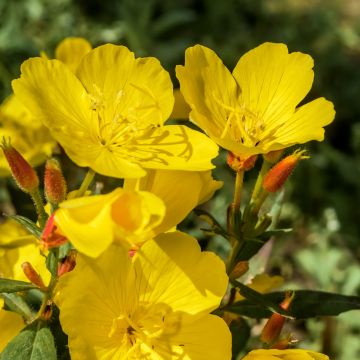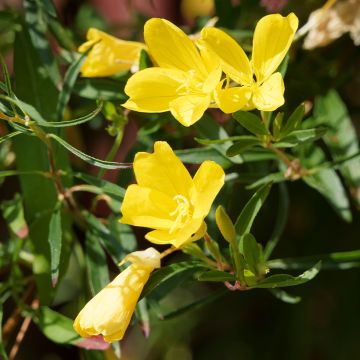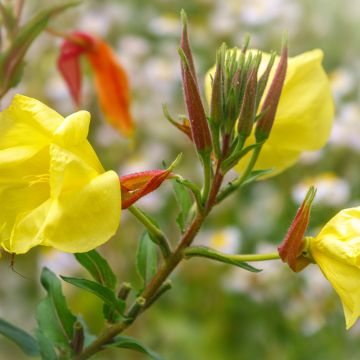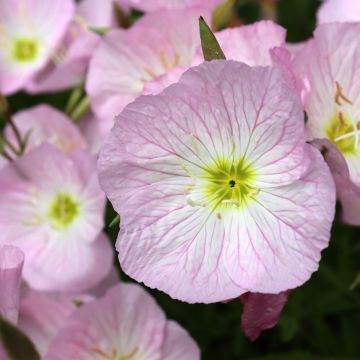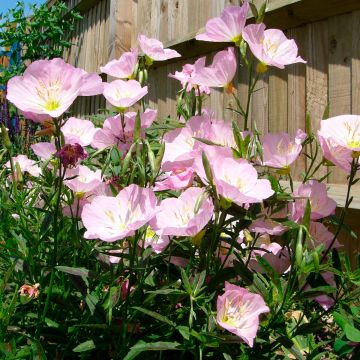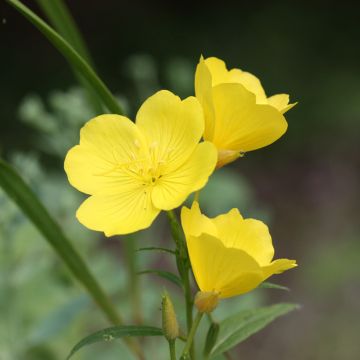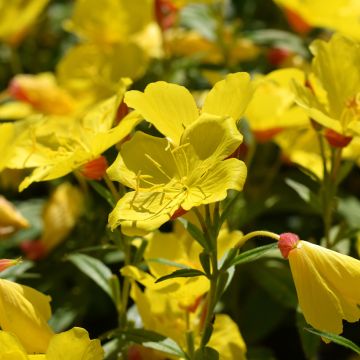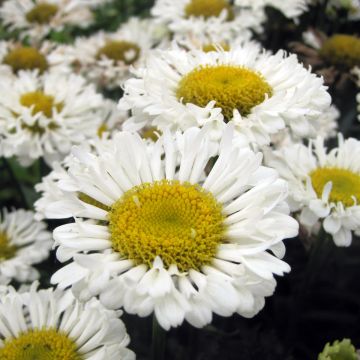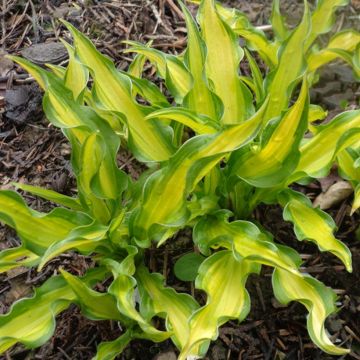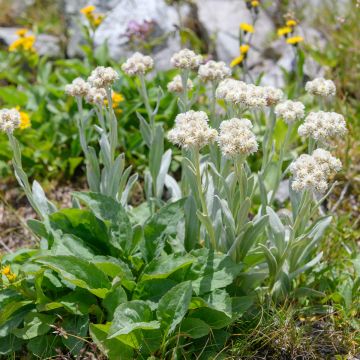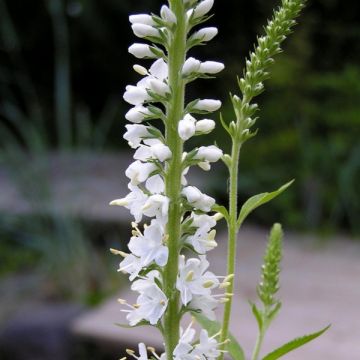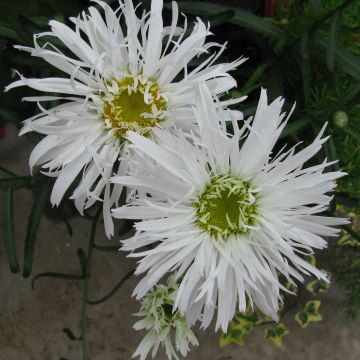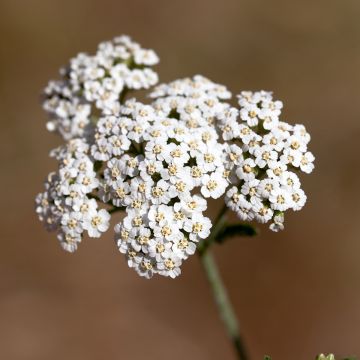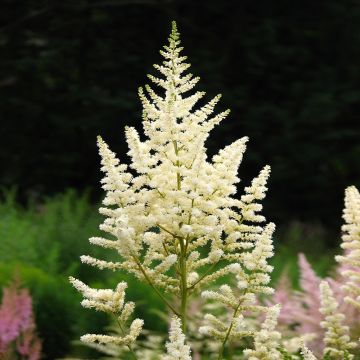Shipping country and language
Your country of residence may be:
Your country of residence is:
For a better user experience on our website, you can select:
Your shipping country:
-
Andorra
-
Austria
-
Belgium
-
Bulgaria
-
Canada
-
Chile
-
Croatia
-
Cyprus
-
Czechia
-
Denmark
-
Estonia
-
Finland
-
France
-
Germany
-
Greece
-
Hungary
-
Iceland
-
Ireland
-
Italy
-
Latvia
-
Lithuania
-
Luxembourg
-
Malta
-
Monaco
-
Netherlands
-
Poland
-
Portugal
-
Romania
-
Slovakia
-
Slovenia
-
Spain
-
Sweden
-
Switzerland
-
United Kingdom
We only deliver seed and bulb products to your country. If you add other products to your basket, they cannot be shipped.
Language:
-
French
-
German
-
Spanish
-
English
-
Italian
My Account
Hello
My wish lists
Log in / Register
Existing customer?
New customer?
Create an account to track your orders, access our customer service and, if you wish, make the most of our upcoming offers.
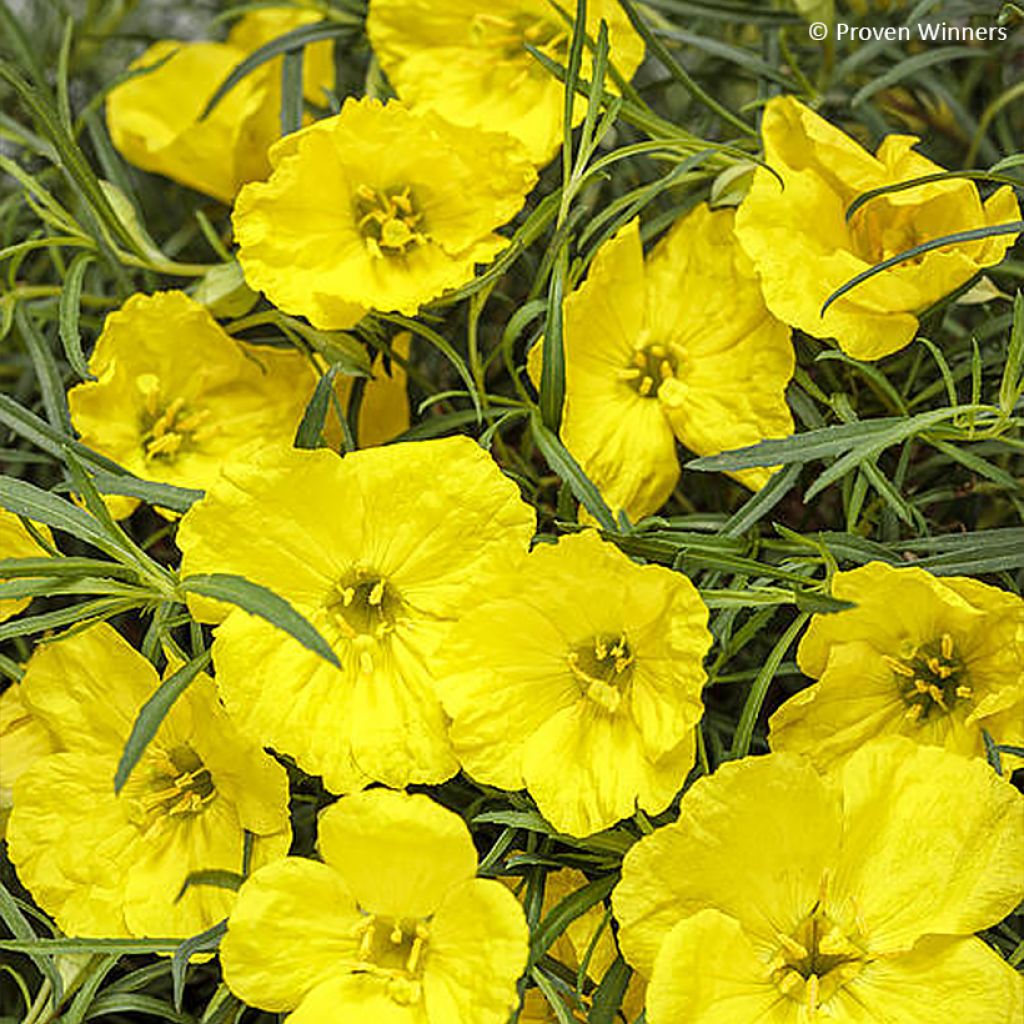

Calylophus serrulatus Superlophus Yellow - Yellow Sundrops
Calylophus serrulatus Superlophus Yellow - Yellow Sundrops
Calylophus serrulatus Superlophus Yellow
Yellow Sundrops, Serrate Evening Primrose
Order in the next for dispatch today!
Dispatch by letter from €3.90.
Delivery charge from €5.90 Oversize package delivery charge from €6.90.
More information
This item is not available in your country.
Schedule delivery date,
and select date in basket
This plant carries a 12 months recovery warranty
More information
We guarantee the quality of our plants for a full growing cycle, and will replace at our expense any plant that fails to recover under normal climatic and planting conditions.
From €5.90 for pickup delivery and €6.90 for home delivery
Express home delivery from €8.90.
Does this plant fit my garden?
Set up your Plantfit profile →
Description
Calylophus serrulatus 'Superlophus Yellow' (synonym Oenothera serrulata 'Superlophus Yellow') is a remarkably floriferous perennial bush that blooms in summer, with large lemon yellow flowers that open during the day, unlike those of its close relative, the evening primrose. It forms a slightly loose, low bushy clump, with slender, long, bright green leaves. It is a plant that thrives in full sun and well-drained, even dry soil. Perfectly suited for rock gardens, borders, and waterless flower beds, it is also welcomed in containers to liven up the terrace or balcony throughout the summer.
Oenothera serrulata 'Superlophus Yellow' is a selection by Voltz known for its wider flowers compared to the species. The wild species is native to dry meadows and mesas in western North America, particularly the Great Plains from Canada to Texas. In well-drained, dry (rocky) soil, its roots can withstand temperatures as low as -15°C. It belongs to the Onagraceae family. The 'Superlophus Yellow' variety is a woody-based perennial with a taproot that can reach deep for moisture. The root does not like to be disturbed. The plant forms a low, slightly loose clump, with few branches, measuring between 25 and 45cm in height. It has narrow, lance-shaped leaves with distinct toothed edges, a fairly light green color, and can reach up to 5-6cm in length. This deciduous foliage dries up in autumn. The flowering period extends from June-July to September, even in dry soil. The cup-shaped flowers have 4 lemon yellow petals, measuring 3 to 4cm in diameter, and bloom during the day. This flowering attracts bees and butterflies. The flowers give way to 2cm long seed capsules.
This Calylophus 'Superlophus Yellow' is a plant that thrives in full sun and well-drained, even dry soil. It will be the perfect companion for rock gardens, slopes, and border plantings, especially in Mediterranean regions. When grown in pots or containers on a terrace or balcony, it will require more regular watering. Pairing it with blue-flowering shrubby salvias will create a beautiful effect. It will also be a great companion for lavenders and Echinops or globe thistles. It can also be planted in front of shrubs such as Perovskia, Teucrium 'Azureum', and Caryopteris.
Report an error about the product description
Flowering
Foliage
Plant habit
Botanical data
Calylophus
serrulatus
Superlophus Yellow
Onagraceae
Yellow Sundrops, Serrate Evening Primrose
Calylophus serrulatus 'Superlophus Yellow'
North America
Other Oenothera - Evening Primrose
Planting and care
Plant Calylophus 'Superlophus Yellow' in spring in full sun, at a rate of 9 plants per square metre to obtain ground cover, or with a spacing of at least 30cm in a flower bed. This plant is highly resistant to heat. Choose its location carefully to avoid disturbing its taproot during transplantation. It can be grown in all types of well-drained soils, even rocky ones, preferably dry, and requires very little maintenance: water during planting and the first year, until the plant is properly rooted. Once it is well established, stop watering. Removing faded flowers is not necessary. However, it is very useful to prune the clump in spring to encourage branching and maintain a compact habit.
Planting period
Intended location
Care
This item has not been reviewed yet - be the first to leave a review about it.
Summer flowering perennials
Haven't found what you were looking for?
Hardiness is the lowest winter temperature a plant can endure without suffering serious damage or even dying. However, hardiness is affected by location (a sheltered area, such as a patio), protection (winter cover) and soil type (hardiness is improved by well-drained soil).

Photo Sharing Terms & Conditions
In order to encourage gardeners to interact and share their experiences, Promesse de fleurs offers various media enabling content to be uploaded onto its Site - in particular via the ‘Photo sharing’ module.
The User agrees to refrain from:
- Posting any content that is illegal, prejudicial, insulting, racist, inciteful to hatred, revisionist, contrary to public decency, that infringes on privacy or on the privacy rights of third parties, in particular the publicity rights of persons and goods, intellectual property rights, or the right to privacy.
- Submitting content on behalf of a third party;
- Impersonate the identity of a third party and/or publish any personal information about a third party;
In general, the User undertakes to refrain from any unethical behaviour.
All Content (in particular text, comments, files, images, photos, videos, creative works, etc.), which may be subject to property or intellectual property rights, image or other private rights, shall remain the property of the User, subject to the limited rights granted by the terms of the licence granted by Promesse de fleurs as stated below. Users are at liberty to publish or not to publish such Content on the Site, notably via the ‘Photo Sharing’ facility, and accept that this Content shall be made public and freely accessible, notably on the Internet.
Users further acknowledge, undertake to have ,and guarantee that they hold all necessary rights and permissions to publish such material on the Site, in particular with regard to the legislation in force pertaining to any privacy, property, intellectual property, image, or contractual rights, or rights of any other nature. By publishing such Content on the Site, Users acknowledge accepting full liability as publishers of the Content within the meaning of the law, and grant Promesse de fleurs, free of charge, an inclusive, worldwide licence for the said Content for the entire duration of its publication, including all reproduction, representation, up/downloading, displaying, performing, transmission, and storage rights.
Users also grant permission for their name to be linked to the Content and accept that this link may not always be made available.
By engaging in posting material, Users consent to their Content becoming automatically accessible on the Internet, in particular on other sites and/or blogs and/or web pages of the Promesse de fleurs site, including in particular social pages and the Promesse de fleurs catalogue.
Users may secure the removal of entrusted content free of charge by issuing a simple request via our contact form.
The flowering period indicated on our website applies to countries and regions located in USDA zone 8 (France, the United Kingdom, Ireland, the Netherlands, etc.)
It will vary according to where you live:
- In zones 9 to 10 (Italy, Spain, Greece, etc.), flowering will occur about 2 to 4 weeks earlier.
- In zones 6 to 7 (Germany, Poland, Slovenia, and lower mountainous regions), flowering will be delayed by 2 to 3 weeks.
- In zone 5 (Central Europe, Scandinavia), blooming will be delayed by 3 to 5 weeks.
In temperate climates, pruning of spring-flowering shrubs (forsythia, spireas, etc.) should be done just after flowering.
Pruning of summer-flowering shrubs (Indian Lilac, Perovskia, etc.) can be done in winter or spring.
In cold regions as well as with frost-sensitive plants, avoid pruning too early when severe frosts may still occur.
The planting period indicated on our website applies to countries and regions located in USDA zone 8 (France, United Kingdom, Ireland, Netherlands).
It will vary according to where you live:
- In Mediterranean zones (Marseille, Madrid, Milan, etc.), autumn and winter are the best planting periods.
- In continental zones (Strasbourg, Munich, Vienna, etc.), delay planting by 2 to 3 weeks in spring and bring it forward by 2 to 4 weeks in autumn.
- In mountainous regions (the Alps, Pyrenees, Carpathians, etc.), it is best to plant in late spring (May-June) or late summer (August-September).
The harvesting period indicated on our website applies to countries and regions in USDA zone 8 (France, England, Ireland, the Netherlands).
In colder areas (Scandinavia, Poland, Austria...) fruit and vegetable harvests are likely to be delayed by 3-4 weeks.
In warmer areas (Italy, Spain, Greece, etc.), harvesting will probably take place earlier, depending on weather conditions.
The sowing periods indicated on our website apply to countries and regions within USDA Zone 8 (France, UK, Ireland, Netherlands).
In colder areas (Scandinavia, Poland, Austria...), delay any outdoor sowing by 3-4 weeks, or sow under glass.
In warmer climes (Italy, Spain, Greece, etc.), bring outdoor sowing forward by a few weeks.
